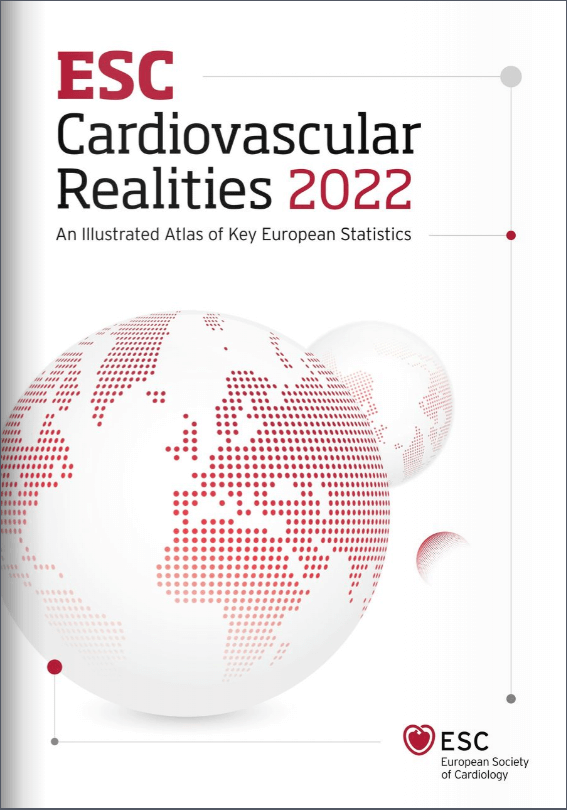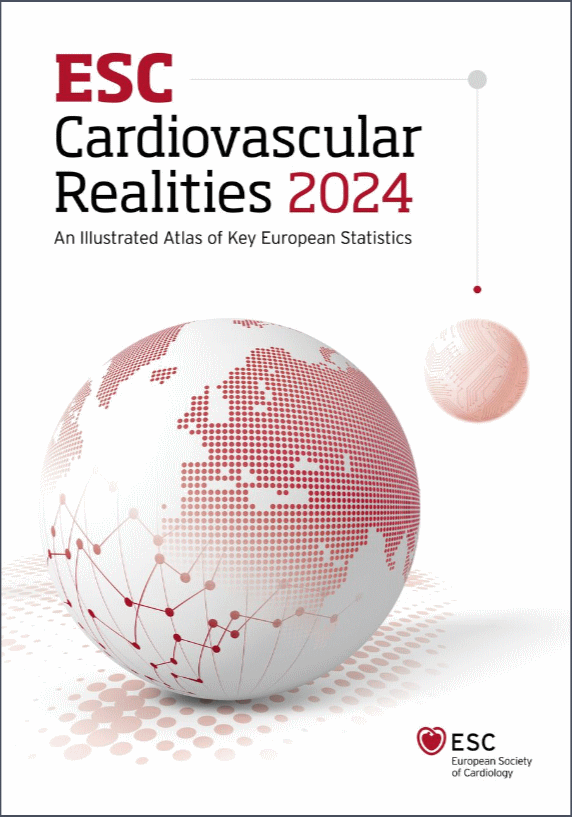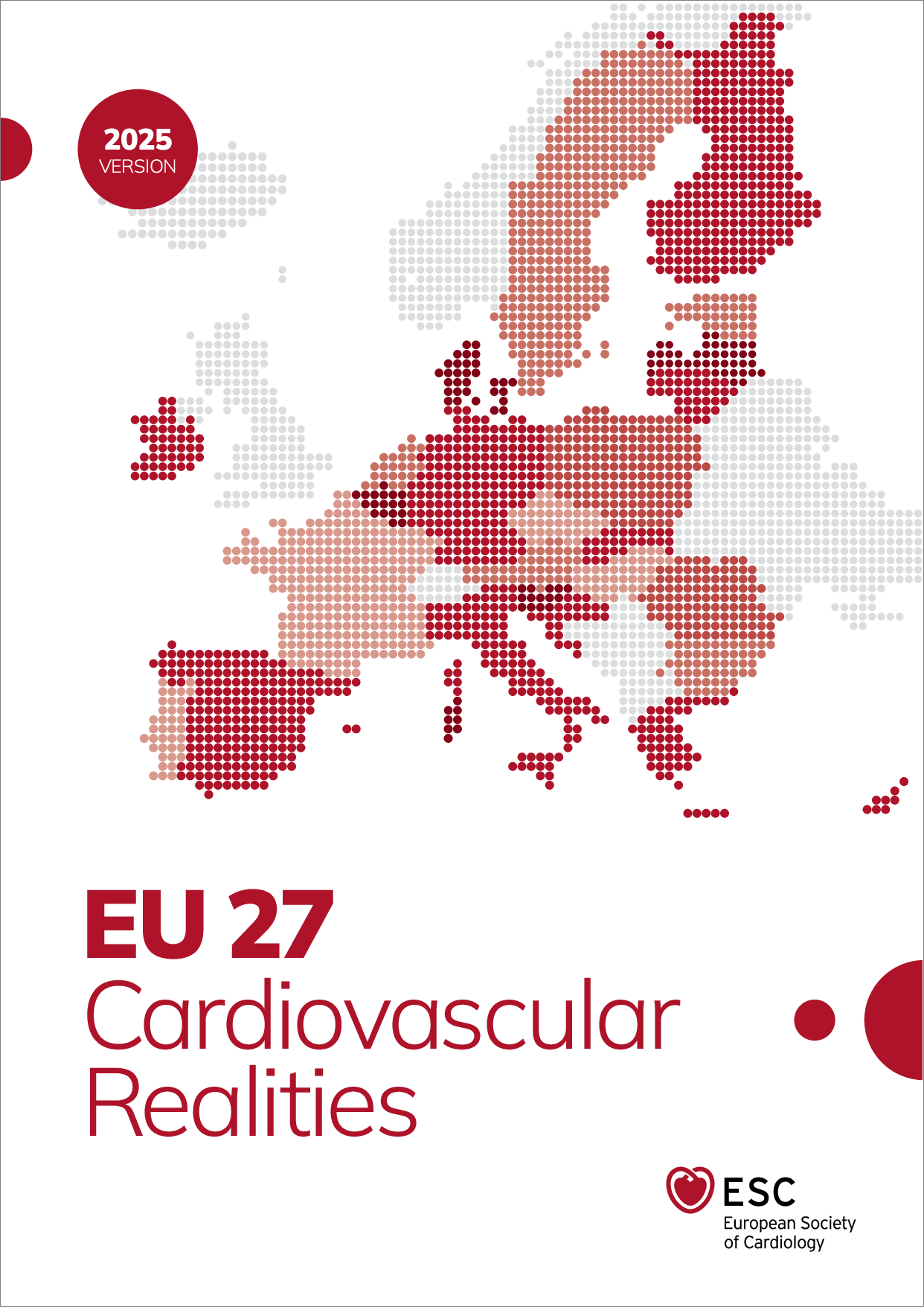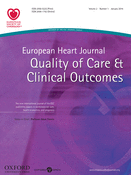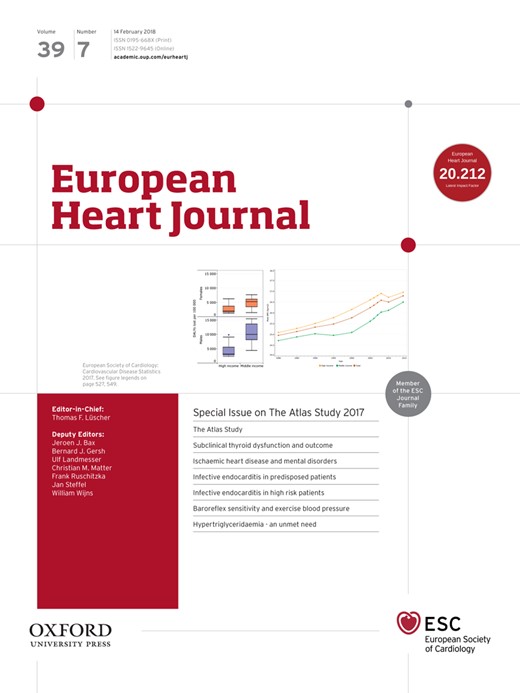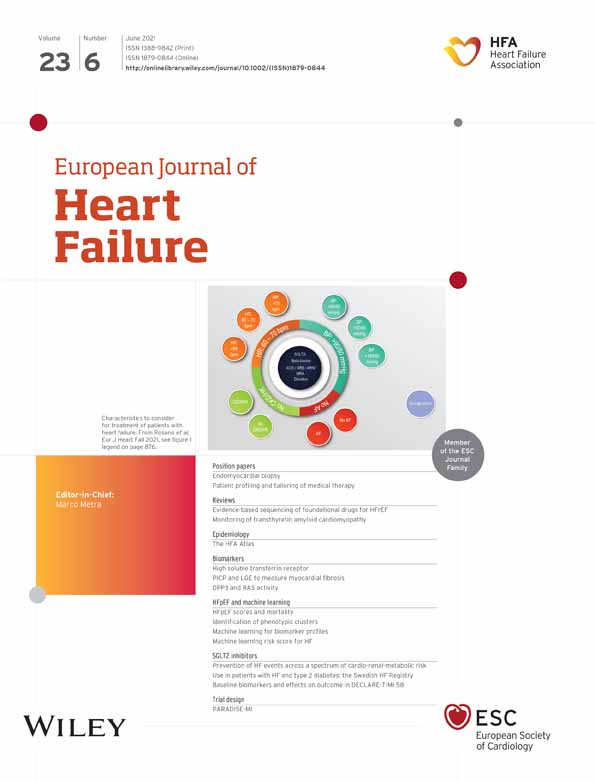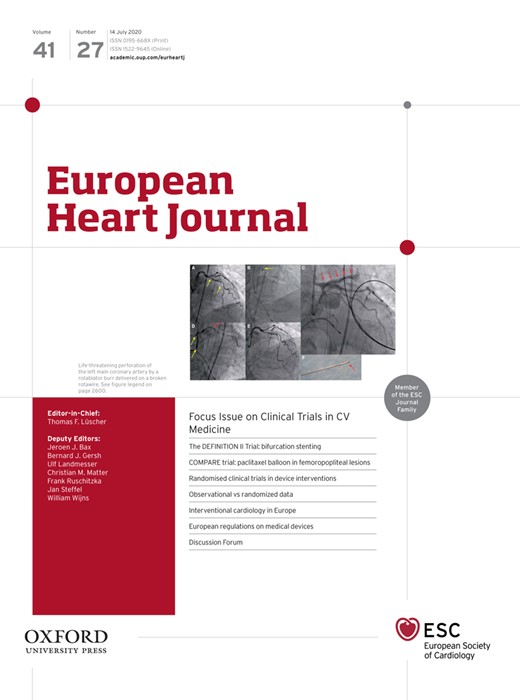Key messages from the latest ESC Atlas datasets
- CVD has remained the most common cause of death in ESC area with over 3 million deaths every year including >1.6 million deaths in females and 1.5 million deaths in males.
- Across ESC member countries, CVD accounted for proportionately more deaths in middle-income compared with high-income countries in both females (53% vs. 34%) and males (46% vs. 30%).
- More than 10.2 million people fall ill with CVD every year in ESC member countries.
- Between surveys of ESC member countries in 2019 and 2023, the number of cardiologists per million in high-income countries increased (from a median of 81 to 100). In middle-income countries the numbers have declined during the same period (from a median of 62 per million people to 55). In 2023, females comprised 39% of cardiologists working in ESC member countries.
- The under-resourced status of middle-income countries is associated with a severe procedural deficit compared with high-income countries in terms of coronary intervention, ablation procedures, device implantation and cardiac surgical procedures.
